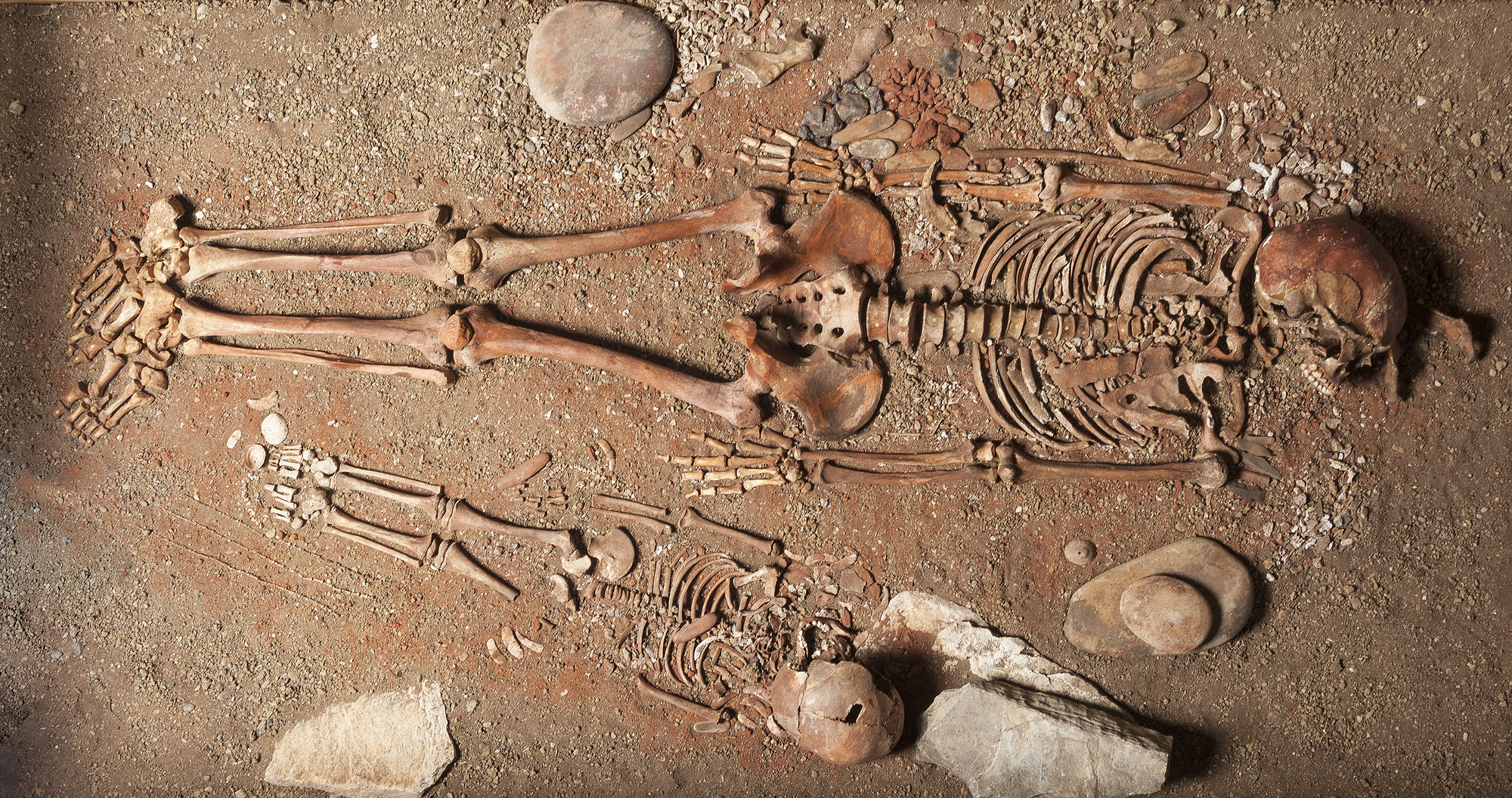
Click here to view image
Palaeolithic
Find; Burial
Human and animal bones, shells, ochre and other minerals, stone artifacts from different eras, and pebbles
Burials in the Arene Candide Cave (Finale Ligure – SV), Palaeolithic, roughly 11,000-9,500 years ago.
Around twenty men, women, children and adolescents, five of which are displayed in the main hall on the first floor of the museum, make up an ancient “cemetery” dating back to around 11,000 and 9,500 years ago.
These individuals received specific burial rites in two distinct stages, separated by several centuries, and were buried alone, side by side, or one on top of the other. The grave goods reveal details about their world: bowls, mineral pigments, shell bracelets and anklets, grinders, animal remains.
They are hunter-gatherers who lived in Liguria at the end of the Ice Age: they are well-built, hunt with throwing weapons, and travel long distances in the mountainous lands of Liguria. The variety of animal remains in these burials is extraordinary: elk, deer, hedgehogs, beavers, fish, birds, and numerous squirrels, as can be seen in the individual burial of a male child in which tail vertebrae are present.
These hunter-gatherers chose the Arene Candide cave as their ritual burial place, bringing with them significant elements from nature.




